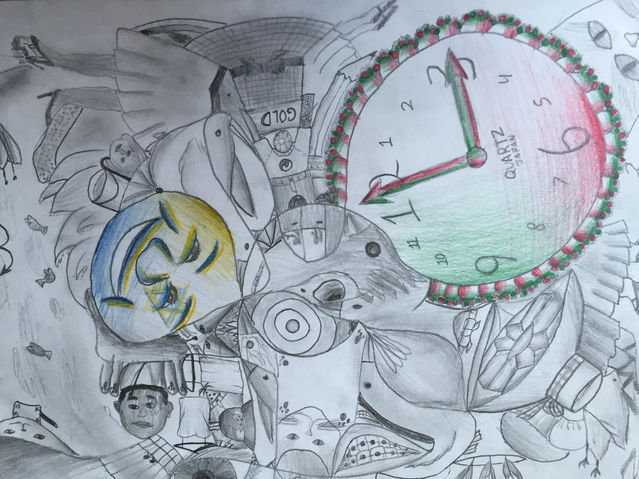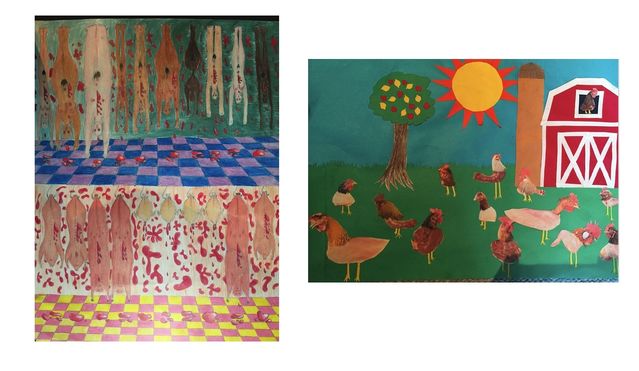
Autism
Autism and Creativity
Do autistic people lack creativity, or are the measures of creativity lacking?
Posted December 18, 2016 Reviewed by Ekua Hagan
A study published in The Journal of Autism and Developmental Disorders found a strong link between autism and creativity. Apparently, people with more autistic traits, when asked to name as many uses as they can for a common object such as a paper clip, come up with fewer suggestions, but the suggestions they offer are more unusual than those of their neurotypical counterparts. They exhibit more “divergent thinking.”
My reaction? It’s about time someone realized this.
The finding surprises most people, because most people associate autism with rigid thinking, restricted interests, and a literal interpretation of speech and behavior. How could a person with these traits possibly be creative? I think the answer has to do with how we measure creativity, and I’m pleased that this study is trying a new approach.
My daughter Sam forced me to start rethinking creativity years ago as I realized that she could envision things that I would never, literally, imagine. When she was young, maybe five or six, I invented an activity to pass time during long car trips. The activity, usually played with one of those magnetic drawing boards that erases with a slide of the knob, involved me drawing one or two lines or curves and then handing it back to Sam. (N.B., This game requires someone else to be driving.) Sam would then fill in a picture. So, for example, I remember one time I drew the image on the left: What do you see?

I do not see anything really. Maybe some diacritical marks from the dictionary’s pronunciation guide. Very literal of me. Sam, on the other hand, drew a bowl of cereal with a spoon and a hand holding a carton of milk, tilted to pour toward the bowl. Per my request, she has redrawn it here, though with a more mature hand.
Every one of her visions surprised me. She sees possibility where I see nothing. More recently she was assigned by her art teacher to create a page of “Noodles and Doodles,” for which she was supposed to draw a continuous curve, like a strand of cooked spaghetti, that overlapped itself in arbitrary places. Then she was instructed to fill in the resulting spaces with doodles. Here is one of her creations.

Sam’s talent for distilling and combining shapes in unexpected ways has continued. I located some of her old object/body images and recall the princess with the pumpkin head. Then she created the Table family, whose members were drawn as broad, flat bodies with heads atop them. The members of the Table family had different personae: There was the soccer player, the ballet dancer, the teacher who carried stacks of books on her shoulders. Then came the flowerpot people whose bodies, well-dressed human torsos, served as planters for tulips and daisies that sprouted from their necks. In fact, as I’ve looked back through her art, I see that her perspective on human figures is not much different from her perspective on flowerpots. Or chicken parts. As her series on vegetarianism illustrates, people are not “special” to her.

The first image here is, clearly, a slaughterhouse. The second requires a closer look: each chicken consists of a head and legs affixed to a chicken part cut from a grocery ad. Some people are appalled by these images and her seeming disconnect from her human community. Me? I love them. I love her lack of anthropocentrism. I love her “divergent thinking.”
But I also understand that her perspective is part of her autism. I do not believe she is capable of elevating human beings to a separate, special position, for better and for worse. She is not arrogant about the way she treats other creatures (good, says the environmentalist in me), but I wonder if that’s because she does not experience a primacy in her human connections (distressed, says the mother who adores her). Just as she hears all sounds equally, unable to filter out the noise most of us recognize as irrelevant and therefore ignore, all the elements of her environment receive equal attention.
Back to creativity. From what I can tell, the referenced study asked participants to generate ideas only about static objects, e.g., paper clips and abstract images. Viewers were expected to create their own context; the objects were not defined, circumscribed, by their role in a larger image. Research shows that people with autism have trouble interpreting their experiences within context (see, e.g., Vermeulen, P., Autism as Context Blindness), whereas most of us habitually identify objects by their relationship to other elements of a situation. For example, we might distinguish between a salt and sugar shaker by the presence or absence of a pepper shaker or a pot of coffee. So it should not be surprising that when autistic people are shown images on a context-less background, they can visualize contexts that are not usually associated with those objects.
When Howard Gardner published his book Frames of Mind: The Theory of Multiple Intelligences in 1983, he revolutionized the way educators and psychologists think about intelligence. Rather than measuring only verbal and logical-mathematical reasoning as the well-known Stanford-Binet IQ test does, Gardner suggested that all people possess at least eight modalities of intelligence. Among them are musical-rhythmic, interpersonal, and kinesthetic-physical intelligence. We all possess stronger intelligences in some modalities, and each individual is unique. Gardner taught us that a child does not need to earn good grades in reading and math to be smart or to have the potential for success.
I hope this research study on creativity is part of a similar transformation in the way we understand creativity. Some creative people may be able to compose fantastic tall tales. Others may be able to reshape the universe in their minds because they are not constrained by conventional wisdom. Other creative folks may... who knows? I do believe that autistic people often have a creative gift that merits celebration. We need to stop to find it.
References
Vermeulen, Peter. (2012). Autism as Context Blindness. Shawnee Mission, KS: AAPC Publishing.
Gardner, H. (1993). Frames of mind: The theory of multiple intelligences. New York, NY: BasicBooks.



